Two houses for sale with beautiful gardens
At these two historic properties, house and garden are matched in beauty, finds Penny Churchill
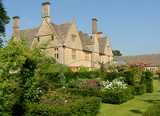

This week sees the launch onto the market of one of the most appealing manor houses of the north Cotswolds, the imposing, Grade II-listed Stanton Court, which dominates the idyllic village of Stanton, four miles from Broadway on the Gloucestershire-Worcestershire border.
For sale for the first time in 30 years -through Savills (020-7409 8885) at a guide price of £11 million-the beautifully renovated stone manor stands in 62 acres of spectacular gardens, grounds and private woodland and revels in breathtaking westerly views over its own cricket field towards Bredon Hill, the Malverns and the Black Mountains of Wales.
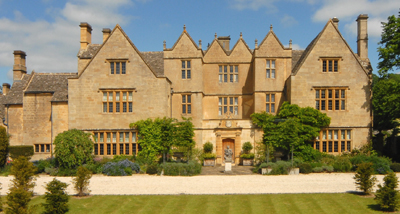
Built in the Elizabethan style in the early 1600s and extended in 1774, the romantic complex of golden-stone buildings was rescued from oblivion in the early 1900s by the Lancashire-born architect Philip Sidney Stott (later made a Baronet), a prolific designer of cotton mills. In 1906, he bought and restored the neglected manor house plus much of the village and protected both until his death in 1937.
Poignantly, the village war memorial built into the boundary wall of Stanton Court commemorates the death of his son, 2nd Lt Philip Nicholson Stott, in March 1915, at the age of 18. Shortly after Stott's arrival in the north Cotswolds, an article in Country Life (November 25, 1911) observed: ‘At Stanton, Nature and man combined to create a rural Elysium and that Elysium has entirely escaped modern vandalism. It is true that there has been much renovation at several points in the village, and most especially at the Court itself. But this has been done with very considerable knowledge and respect of Cotswold traditions.'
The manor of Stanton was owned by nearby Winchcombe Abbey until the Dissolution, after which Henry VIII assigned it to his sixth queen, Katharine Parr. Twenty years later, it was sold to the Dolman family, who carved it up and sold it off to at least five different owners, several of whom built Elizabethan and Jacobean houses in and around the village.
Several generations of the Jackson family lived at Stanton, before their lands passed by sale or marriage to the Izods of Toddington, who built the original U-shaped Stanton Court in the early and later 17th century. That property eventually passed to their kinsmen, the Wynniatts of Dymock, who altered and extended the house in the Georgian style in the late 18th century. Stanton Court remained with the Wynniatts until the early 20th century, when Stott reassembled the estate to more or less the way it was in the Dolmans' day.
During their 30-year tenure, the present owners of Stanton Court have combined French flair and English traditional know-how to comprehensively redesign the almost 15,000sq ft house, adding, among other elements, a splendid garden room and a pool suite.
Sign up for the Country Life Newsletter
Exquisite houses, the beauty of Nature, and how to get the most from your life, straight to your inbox.
Within the past four years, the roof has been completely overhauled and insulated, chimney stacks rebuilt, downpipes concealed internally and the entire property re-plumbed and rewired. The accommodation includes four fine reception rooms, the 17th-century Grand Hall and the Georgian double drawing room being especially noteworthy. Then, there is a study, main and secondary kitchens, a billiard room, a cinema, a playroom, an exquisite master suite, eight further bedrooms with en-suite bathrooms, a studio apartment and a separate staff annexe.
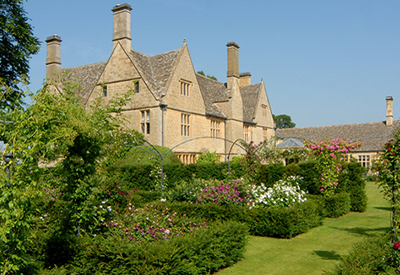
Stanton Court's spectacular gardens, designed to create grand displays in spring and autumn, have been brilliantly revamped by Chelsea gold medal winner Rupert Golby, who honed his feel for traditional Cotswold gardens with the late Rosemary Verey at Barnsley House.
At Stanton Court, Mr Golby draws inspiration from the beauty of the surrounding hills and the presence of naturally fed lakes to create a series of streams and rivulets plus a rill that leads through a spectacular ornamental vegetable garden to a pond enhanced by four medlar trees. A formal rose garden, planted two years ago in the shadow of the village church, will soon be seen in all its summer glory.
In the mid 20th century, Pevsner described Stanton as ‘architecturally, the most distinguished of the smaller villages in the North Cotswolds', and it's to the credit of the present owners of Stanton Court that the village, with the manor as its centrepiece, is, if anything, even more beautiful now than it was then.
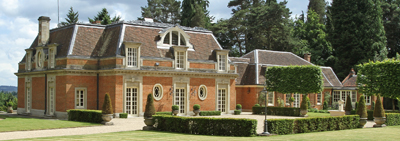
Another triumph of Anglo-French collaboration is the delightful Charles Hill Court (above) at Tilford, three-and-a-half miles from Farnham, Surrey, which is for sale through Knight Frank (01483 565171) and Savills (01252 729000) at a guide price of £6m.
Designed by the inspirational Detmar Blow, then the architect of choice of the British aristocracy, and his Beaux Arts-trained partner Fernand Billerey, with more than a nod to Marie-Antoinette's Le Petit Trianon at Versailles, Charles Hill Court was built in 1908 for Elizabeth (Lily) Antrobus of the Coutts banking family.
An article in Country Life (November 26, 1910) describes the house as ‘a little woodland retreat, a lady's bower, designed in classic spirit... (although) not intended as a retreat for an extravagant French Queen of the past, but for a prudent English gentlewoman of the present'. Although little more than half the size of Stanton Court, Charles Hill Court, set in 17.64 acres against the backdrop of the Surrey Hills, is just as impressive in its way, with sumptuous gardens created by garden designers Liz Lake Associates that reflect the current vogue for traditional planting schemes and the inspired use of water.
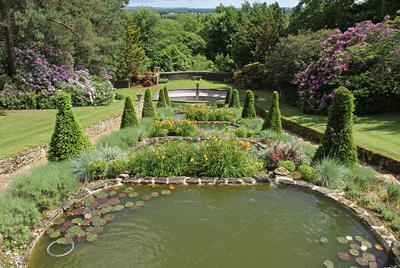
Areas of particular charm include the wisteria walk from the front of the house through to the temple, the terraced ponds on the south-facing hillside and the peaceful woodland walks. The 65ft-long outdoor pool has been designed to mirror the architecture of the main house and the floodlit tennis court occupies a sheltered spot within the original walled garden.
The current owner of Charles Hill Court has carried out extensive work on the house, which, despite its illustrious heritage, isn't listed. Alterations included opening up the western end of the building to house a substantial Mark Wilkinson kitchen/ breakfast room and enclosing the garden room, originally an outdoor seating area, to form an orangerystyle room for entertaining. The drawing room to the east of the library, originally designed to house Miss Antrobus's extensive porcelain collection and thought to have been modelled on the drawing room at Clarence House, has four sets of French windows, elegant ceiling-height panelling and a large, open central fireplace.
Charles Hill Court has accommodation on three floors, including four main reception rooms, the garden room, the kitchen/breakfast room, a flower room, a gymnasium, a large master suite, five further bedrooms and an integral studio wing. There is also a two-bedroom lodge.
In 1910, Country Life described the house as ‘a place of large present delight and still larger future potentialities'. Given its conveniently unlisted status, the same can probably be said of it today.
* Country houses for sale in Gloucestershire
* Follow Country Life Magazine on Twitter
Country Life is unlike any other magazine: the only glossy weekly on the newsstand and the only magazine that has been guest-edited by HRH The King not once, but twice. It is a celebration of modern rural life and all its diverse joys and pleasures — that was first published in Queen Victoria's Diamond Jubilee year. Our eclectic mixture of witty and informative content — from the most up-to-date property news and commentary and a coveted glimpse inside some of the UK's best houses and gardens, to gardening, the arts and interior design, written by experts in their field — still cannot be found in print or online, anywhere else.
-
 380 acres and 90 bedrooms on the £25m private island being sold by one of Britain's top music producers
380 acres and 90 bedrooms on the £25m private island being sold by one of Britain's top music producersStormzy, Rihanna and the Rolling Stones are just a part of the story at Osea Island, a dot on the map in the seas off Essex.
By Lotte Brundle Published
-
 'A delicious chance to step back in time and bask in the best of Britain': An insider's guide to The Season
'A delicious chance to step back in time and bask in the best of Britain': An insider's guide to The SeasonHere's how to navigate this summer's top events in style, from those who know best.
By Madeleine Silver Published
